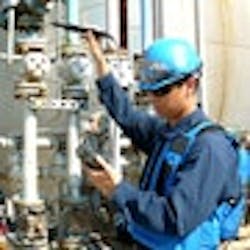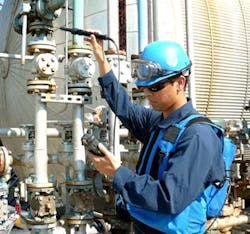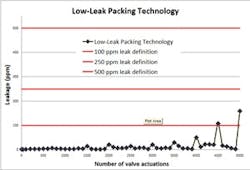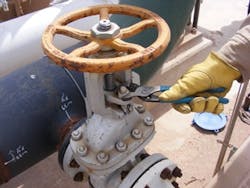Enhanced Leak Detection and Repair (LDAR) programs (ELP) began to appear in consent decrees in the early 2000s for refineries and in 2009 for chemical plants — they promise to become the norm in cases where the U.S. Environmental Protection Agency (EPA) takes issue with the effectiveness of standard LDAR programs. Designed to systematically improve the quality and effectiveness of industrial sites' efforts, ELP is considered by both the Justice Department and EPA to be appropriate injunctive relief in LDAR enforcement cases.
Significantly, LDAR itself is a National Air Toxics Enforcement priority: "Leaking equipment, such as valves, pumps and connectors, are the largest source of emissions of volatile organic compounds (VOC) and volatile hazardous air pollutants (VHAP) from petroleum refineries and chemical manufacturing facilities… With the large universe of sources subject to LDAR requirements and the high level of non-compliance, EPA will continue to focus on LDAR in the FY 2008–10 air/toxics strategy" [1]. With so many sites still to be inspected, the proposed priorities for 2011–2013 remain the same.
Regulatory History
The U.S. government's involvement in environmental issues dates back to the 1955 enactment of the Air Pollution Control Act. Publication of Rachel Carson's "Silent Spring" in 1962 marked the beginning of the environmental movement and helped spur the Clean Air Act of 1963. In 1970 that act was amended to include motor vehicle emissions. The Clean Air Act of 1990 imposed additional regulations regarding emission levels and permits, and introduced LDAR programs to a growing list of compliance criteria.
By 1998, the EPA had realized that LDAR programs weren't having the desired effect. Investigations into fugitive emissions from refineries revealed that actual leak and emission rates were two or more times higher than those reported [2]. The findings prompted the EPA and Justice Department to focus on these facilities and pursue consent decrees.
When the EPA and Justice Department bring suit against a facility based on the EPA's investigative and enforcement arm findings, the parties negotiate a consent decree that may require specific actions to settle the charges. These actions may include equipment and system upgrades, special projects furthering use of new technologies, and implementation of an ELP.
Enhanced LDAR
An ELP begins with defining specific items such as an open-ended line, certified low-leaking valves and packings, and covered equipment and processes. Based on 2009 settlements and EPA presentations, a typical ELP contains 14 parts that vary by site and consent decree.
where VTBRR is the number of valves leaking at a rate of 100–250 ppm to be replaced or repacked in the maintenance shutdown, VT is the total number of valves in the covered process unit at the time of the shutdown, VDOR is the number of DOR valves to be replaced or repacked in the shutdown, VPRR is the number of valves previously replaced or repacked with certified low-leak technology and VPR is the number of valves awaiting replacement or repacking prior to shutdown. The more stringent alternative of Part G requires that 20% of valves leaking between 100 ppm and 250 ppm be replaced or repacked. Optionally, valves emitting HAPs can be eliminated from service — but their removal mustn't introduce other potential points of leakage. The number of such valves may be credited toward the calculated number of valves requiring replacement or repacking. If a certified low-leak valve or packing isn't commercially available, the site must submit a report, identifying each affected valve, vendors contacted and written documentation from each such vendor that a certified remedy is unavailable.
| Component | Leak, ppm |
| Valve | 250 |
| Connector | 250 |
| Pump | 500 |
| Agitator | 2,000 |
| Open-ended line (at closure device) |
250 |
Jim Drago, P.E., is manager, business development and market research, for Garlock Sealing Technologies, Palmyra, N.Y. E-mail him at [email protected].
REFERENCES
1. "FY08–FY10 Compliance and Enforcement National Priority: Clean Air Act, Air Toxics," U.S. EPA, Washington, D.C. (Oct. 2007).
2. "Leak Detection and Repair — A Best Practices Guide," Appendix E, "Enforcement Alert —Proper Monitoring Essential to Reducing 'Fugitive Emissions' Under Leak Detection and Repair Programs," U.S. EPA, Washington, D.C. (2007).



